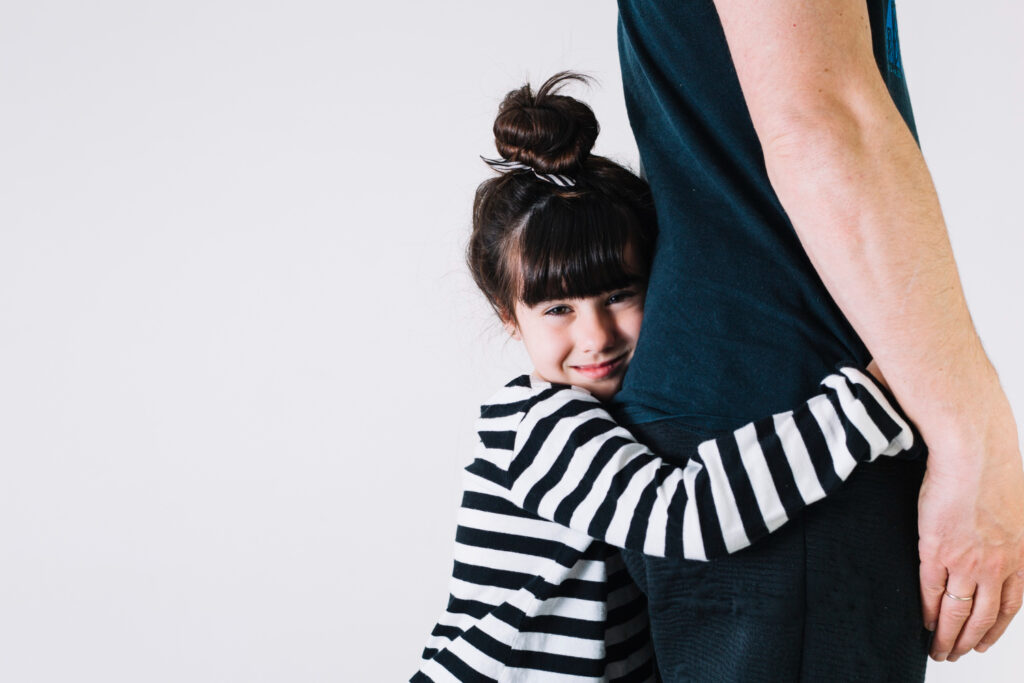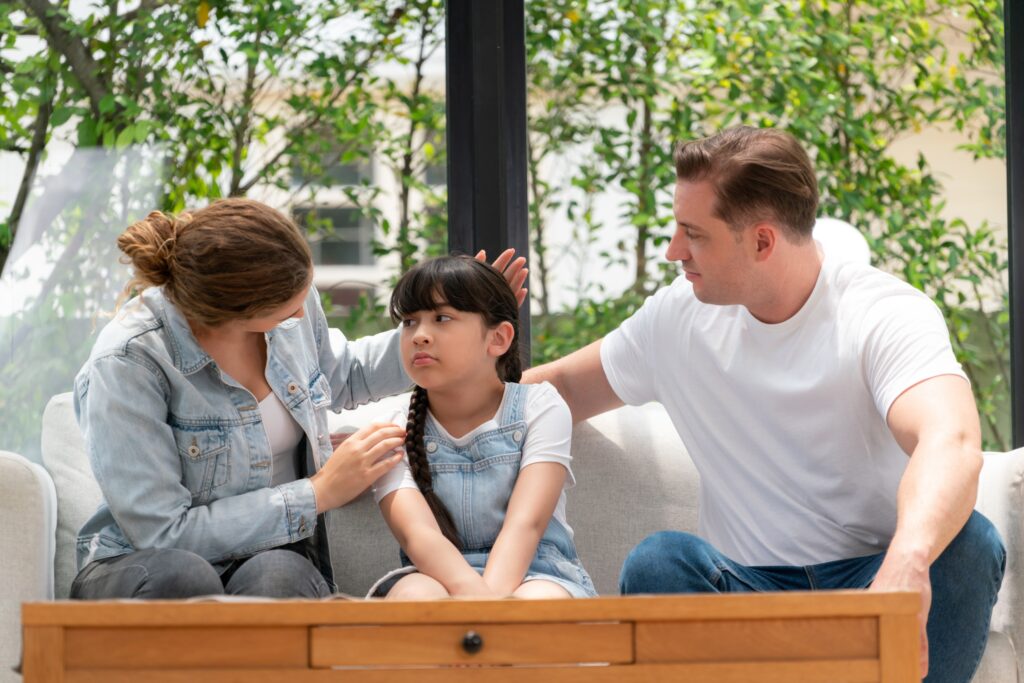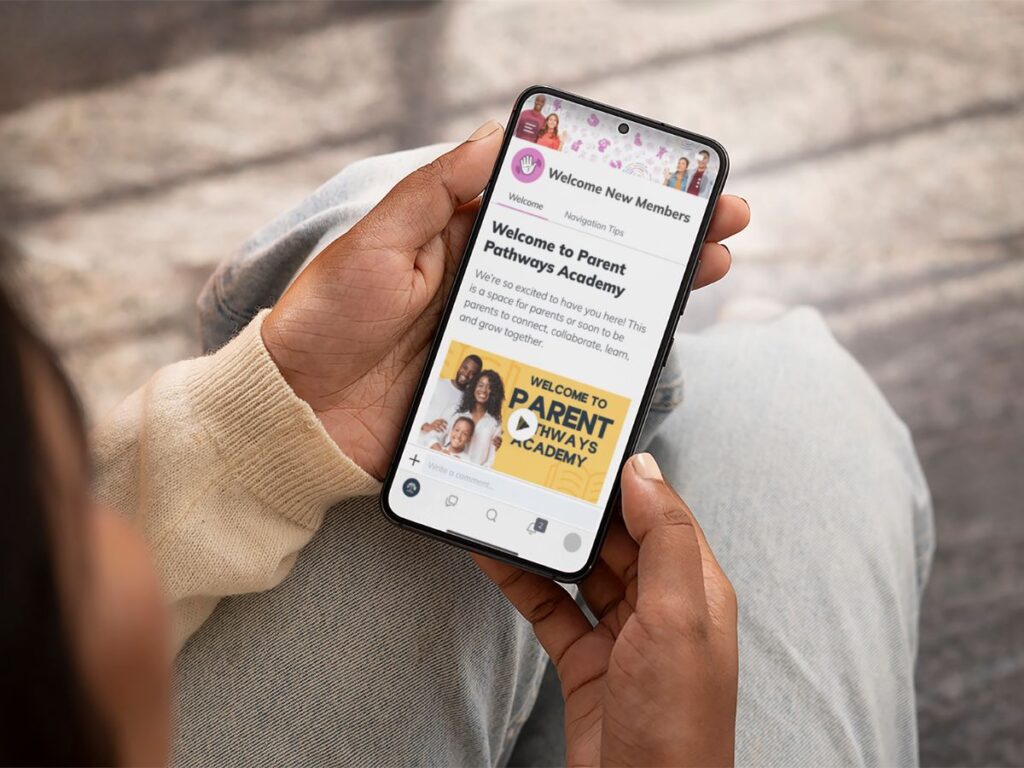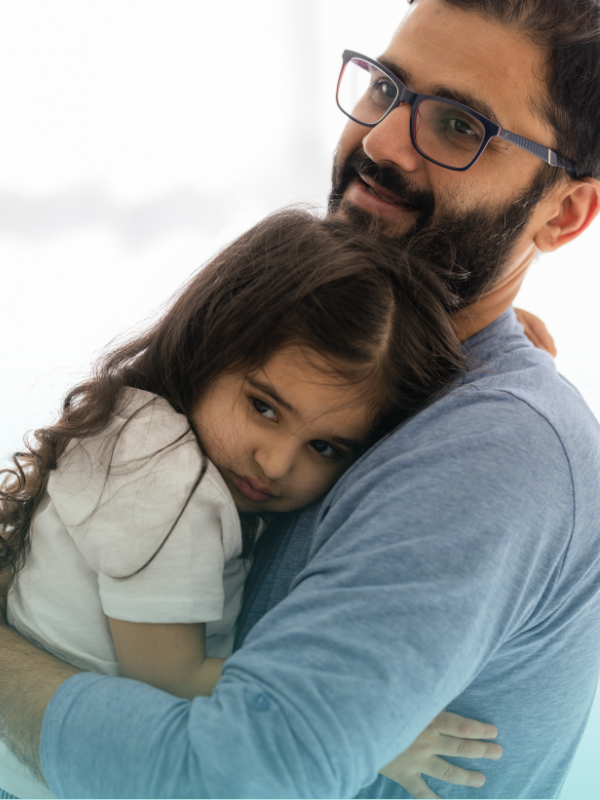Helping children cope with anxiety doesn’t have to mean overhauling your entire routine. Sometimes, the biggest impact comes from the smallest shifts: an extra minute of connection, a different way of responding, a little more calm built into the day.
In this blog, we’ll break down:
- what anxiety looks like in children,
- the simple habits that truly help, and
- how to support emotional wellbeing in ways that feel doable at home.

Spotting Anxiety in Children
Anxiety doesn’t always look like worry. In kids, it might show up as:
- Trouble sleeping or frequent stomachaches
- Avoidance of school or new situations
- Meltdowns over small transitions
- Needing constant reassurance
According to the CDC, while fears and worries are typical in children, persistent or extreme forms of fear and sadness could be due to anxiety or depression. These conditions can interfere with a child’s daily activities and development. Early diagnosis and access to services can make a significant difference in the lives of children with mental health conditions (Centers for Disease Control and Prevention, 2023)
Try this: Ask open-ended questions during quiet moments like, “Is there anything on your mind today?”
Reflect: What small changes in behavior have you noticed in your child lately?
Shift 1: Create Predictable Routines
Children feel safer when they know what to expect. Anxiety often thrives in chaos or constant change, so adding predictability—even in small ways—can help settle an overwhelmed mind.
This might look like:
- A 10-minute wind-down routine before bed
- Visual schedules for young kids
- A consistent after-school snack and check-in time
These habits give your child’s nervous system room to relax. And it gives you a more peaceful rhythm, too.
Try this: Add a calm-down corner with soft lighting, pillows, and quiet activities.
Reflect: Where in your day could you add more predictability?
Check out Simple Mindfulness Routines That Bring Families Closer to discover easy, everyday practices for helping children cope with anxiety and strengthening emotional connection at home.
Shift 2: Model and Teach Coping Skills
Your reactions matter more than you might think.
Kids watch how we handle stress—so when you take a deep breath or talk through your own feelings calmly, you’re giving them a real-life example of how to deal with tough emotions. That’s powerful. And it turns out, simple things like breathing exercises or quiet mindfulness routines really do help.

A recent study found that when kids practice mindfulness in a group setting—like focusing on their breath or doing calming activities—they get better at managing big feelings (Rowland, Hindman, & Hassmén, 2023). The structure and consistency matter, but the heart of it is this: the little things you do every day can help your child feel more in control inside.
Try this: Teach a simple 4-count breath: “In for 4, hold for 4, out for 4.” Practice together.
Reflect: How do you usually respond when your child feels overwhelmed?
Shift 3: Validate, Don’t Minimize
When kids say they’re worried, it’s tempting to reassure quickly: “You’re fine” or “That’s nothing to worry about.” But skipping validation can make anxiety feel bigger.
Instead, try: “That sounds hard. Want to talk about it?”
You’re showing your child that emotions are safe to feel—and that they don’t have to face them alone.
Try this: Use emotion cards or feeling charts to help younger kids express big emotions.
Reflect: When was the last time you simply listened to your child’s worry?
Shift 4: Set Gentle Limits on Triggers
Excessive screen time, rushed mornings, or exposure to scary news can make anxious feelings worse. Protecting your child’s emotional environment can reduce overall stress.
- Keep screen time calm and limited
- Avoid rushing through transitions
- Monitor media exposure, especially before bed
These aren’t strict rules—they’re acts of care.
Try this: Create a “calm tech” routine by switching to audiobooks or soft music after dinner.
Reflect: What’s one environment trigger you could shift this week?
When to Seek Extra Support
Helping children cope with anxiety sometimes means looping in professional support. If your child’s anxiety is interfering with school, sleep, friendships, or daily life, it may be time to speak with a pediatrician or child therapist.
You’re not failing if you ask for help – you’re modeling strength.
Try this: Write down your concerns and take them to your next doctor’s visit.
Reflect: Do you feel confident in knowing where to turn if your child needs more support?
FAQ: Helping Children Cope with Anxiety
Q: What age do children typically start experiencing anxiety?
A: Anxiety can appear as early as age 3–5, often triggered by separation or new environments. Older children may express social anxiety or performance-related fears.
Q: Should I let my child avoid things that make them anxious?
A: Gentle exposure is usually more helpful than avoidance. Support your child through small steps toward what they fear instead of removing the challenge completely.
Q: Are there apps or tools to help?
A: Yes! Apps like “Moshi” (for sleep), “Smiling Mind” (for mindfulness), and “Breathe, Think, Do” (by Sesame Street) can support emotional regulation for kids.
Final Thoughts
Helping children cope with anxiety starts with these small shifts: more calm, more connection, more compassion. You don’t need to have all the answers—you just need to show up, consistently and with love.
Parent Pathways Academy is here to walk beside you. Explore our family resources and guided tools for parents to build emotional wellbeing in your home—one small shift at a time. Download the app today.

References
Centers for Disease Control and Prevention. (2023). Anxiety and depression in children: Get the facts. https://www.cdc.gov/children-mental-health/about/about-anxiety-and-depression-in-children.html
Rowland, G., Hindman, E., & Hassmén, P. (2023). Do group mindfulness-based interventions improve emotion regulation in children? A systematic review. Journal of Child and Family Studies, 32(5), 1294–1303. https://doi.org/10.1007/s10826-023-02544-w

